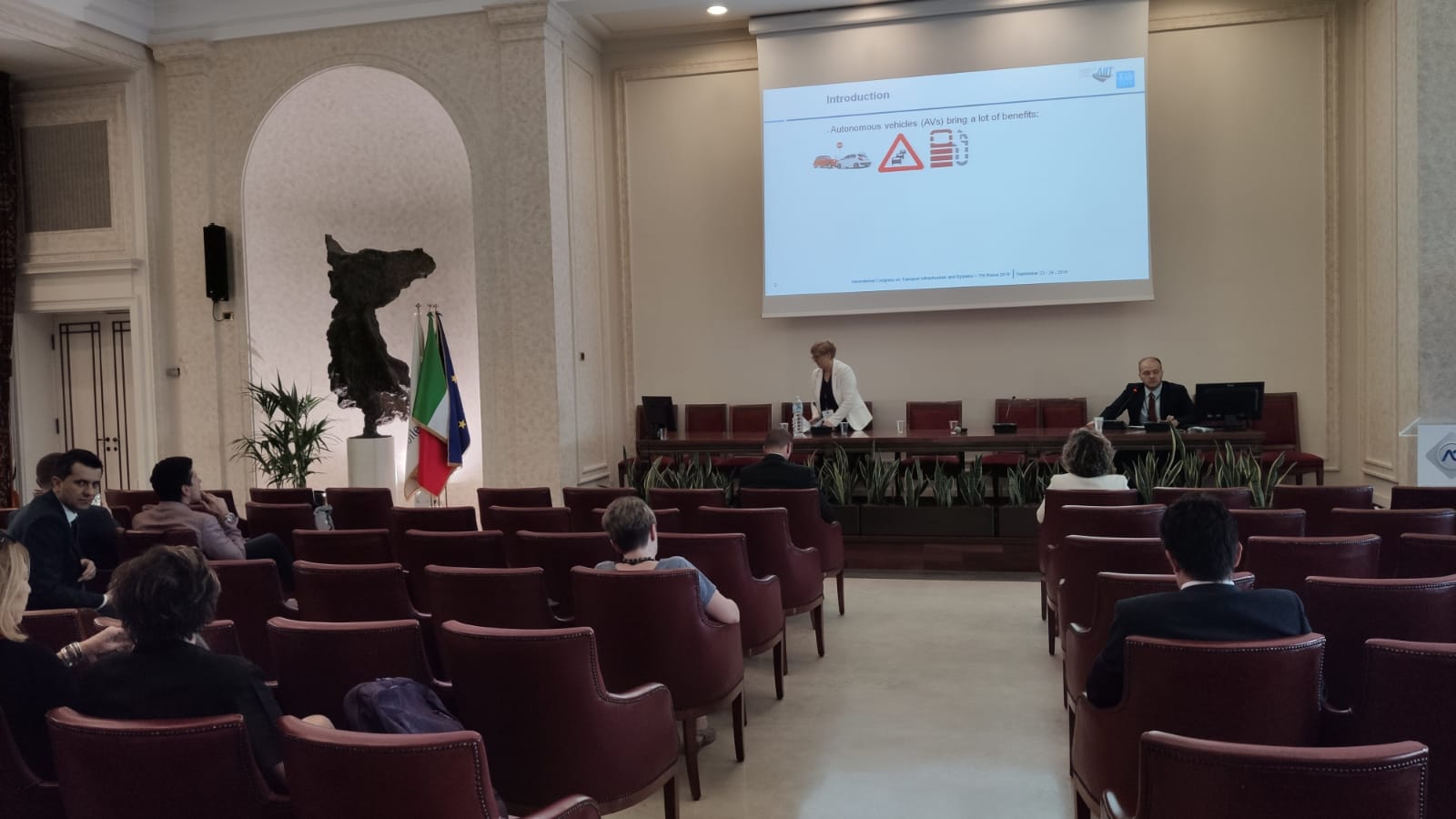TIS 2019
Session 2 – Automotive Innovation Impacts

Automative innovations are highly discussed topic lately. In this session, chaired by Ilaria Delponte various aspects are discussed, from impact on users to sustainability of such solutions.
Đorđe Petrović, Radomir Mijailović and Dalibor Pešić – Traffic accidents with autonomous vehicles: type of collisions, manoeuvres and errors of conventional vehicles’ drivers / It is clear that autonomous vehicles (AVs) bring a lot of benefits since they have potential to reduce traffic accidents. But despite the great expectations the current state shows that accidents occur more often with autonomous vehicles than with conventonal ones. This study analyzed traffic accidents with autonomous vehicles that occured in the US state of California in the period from 2015 to 2017. The method used in this study was a comparative analysis of autonomous vehicles traffic accidents with conventional vehicles accidents at the same locations. During the analysis of traffic accidents, the emphasis was put on the type of collision, manoeuvres and errors of the drivers of conventional vehicles that led to the traffic accident. The obtained results were used to propose measures that will improve communication between autonomous vehicles and drivers’ conventional vehicle.
Stefano de Luca, Roberta Di Pace and Francesca Bruno – Accounting for attitudes and perceptions influencing users’ willingness to purchase Electric Vehicles through a hybrid choice modelling approach based on the Analytic Hierarchy Process (AHP) / There are various factors that can influence the decision-making process. This study is concentrated on modelling users’ propensity to choose or adopt innovative technology. It aims to show different attributes that may influence the decision on choosing an electric vehicle. The approaches chosen to measure perceptions and attitudes were direct observation and direct questioning. The main purpose of this paper is to understand the process of choosing relying on survey data collection, data analysis and puchase behaviour modelling. The accent was put on the role of attitudes and perception towards electric vehicle advantages or barriers.
Martina Sciaccaluga and Ilaria Delponte – Investigation on human factors and key aspects involved in Autonomous Vehicles – AVs acceptance: new instruments and perspectives / User has a central role in the AV system development so understanding it’s needs and perception is a crucial question for this study. Since human factors influence all the process it is important to understand which are the common obstacles to the AVs technology acceptance in order to outline an urban strategy favoring this technology. An analysis based on the demographic differences -such as age, gender, culture, personal experience- and abilities of the users can give a huge contribution to the matter. Gamification is an innovative approach that might help to collect these kind of information that could help understand users’ needs and grant the necessary knowledge everyone need through emotional involvement.
Margarida Coelho, Claudio Guarnaccia, Behnam Bahmankhah and Elisabete Ferreira – Driving Information in a Transition to a Connected and Autonomous Vehicle Environment: Impacts on Pollutants, Noise and Safety / The energy consumption from the transportaton sector is pretty high (33% of energy consumption). The biggest potential of integrating connected and autonomous vehicle (CAV) technologies is the improvement of the urban mobility, road safety, as well as reduction on energy use, pollutants and noise emissions. The main vision of this study is to develop algorithms for driving volatility through driver warnings and control assists in a CAV environment. And to predict immediate driver action using information about position and motion. It can be done by understanding instant driver decisions. Distinguishing normal from anomalous is required to develop framework for optimizing road transportation impacts. The key in this problem is finding the synergy between technology and human behaviour.
Alessandro Calvi, Fabrizio D’Amico, Luca Bianchini Ciampoli and Chiara Ferrante – Evaluation of driving performance after a transition from automated to manual control: a driving simulator study / In the light of the emerging of the automated driving there are some concerns that still much more research is needed before widespread benefits can be realized. The aim of this study is to try to understand if an automation period can reduce fatigue and/or distract drivers, especially when they have been inattentive and involved in a secondary task during highly automated driving. The chosen methodology is a driving simulator and participants were 31 male and 12 female average 31,9 years old. This research investigated the possible after-effect of automateed driving on drivers performance and workload. The results show not significant after-effects of the automation on driving performance although a more dangerous behaviour of drivers who previously had a driving automation period was noted in some cases.
CHAIRMAN: Ilaria Delponte





